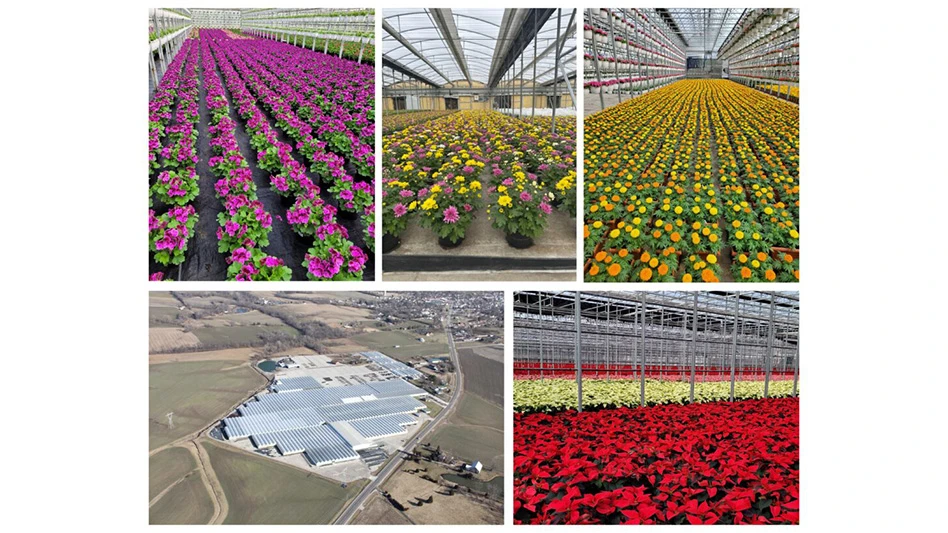
Fans cool the greenhouse, remove excess humidity and exchange CO2-depleted air. They also provide positive movement of air, as compared to natural ventilation that is dependent on wind movement and thermal buoyancy.
Fan selection for maximum efficiency at the lowest cost should be a priority. Consider these fan selection tips.
Choose a ventilation fan based on 1/10-inch static pressure. Air flowing though shutters, discharging into a headwind or being drawn through evaporative cooling pads requires greater pressure from the fan. This reduces output. The airflow difference between zero static pressure and 1/10 of an inch is 10 to 15%. Beware of manufacturers who only furnish performance at zero static pressure difference.
Select a fan with a high-efficiency, totally enclosed motor. Split-phase or capacitor-start motors are more efficient. Due to the dusty, high-moisture conditions in a greenhouse, totally enclosed motors should be selected to give better service and longer life. Dual-speed motors with a two-stage thermostat or controller provide better temperature control.
Choose a fan that has a Ventilation Efficiency Ratio (VER) rating of 15 or higher. The Bioenvironmental and Structural Systems (BESS) laboratory at the University of Illinois evaluates the performance of fans. The VER is the fan efficiency in cfm output/watt of electrical input. The fan VER is rated at different static pressure and with accessories such as shutters, cones and screens to simulate installation in the greenhouse. The lab has found that the performance of fans between the best and poorest vary by a factor of two. Most manufacturers have their fans tested at the lab, and data for all fans tested can be found on the BESS website at bess.illinois.edu.
A slant-leg or slant frame is best. This design increases efficiency by 2 to 3% by reducing the influence of wind currents. It is also easier to install and clean, as the shutter is integral and on the indoor building side of the fan housing.
A fan with an exterior cone is 10 to 15% more efficient. Adding a tapered cone to the outlet of a fan increases airflow and reduces wind influence.
Use belt-driven fans. Although direct-drive fans have a lower initial cost and require less maintenance, they are less efficient and produce more noise.
Shutters influence airflow and efficiency. Shutters located on the intake side increase airflow about 10%, as compared to shutters on the exhaust side. Making the shutter motorized provides positive opening and increases airflow. It also keeps the shutter closed when the fan is off, thus reducing heat loss. Shutter motors use seven to 15 watts per hour.
Provide frequent fan maintenance. This includes cleaning the shutter and fan blades. Tests at the BESS lab showed that dust and dirt can reduce airflow by as much as 30%. Tighten belts when they start to squeal and replace them when they start to show wear.
The fan should meet OSHA safety standards. A well-designed guard will disrupt airflow and efficiency by less than 5%.
Latest from Greenhouse Management
- GIE Media Horticulture Group wins five regional 2025 Azbee Awards of Excellence
- Terra Nova Nurseries introduces rust-free and disease-resistant heucherella
- John T. Nickel, founder of Greenleaf Nursery Co., passes away at 89
- Three tours offered at 2025 Farwest Show
- Garden Media Group announces sixth annual Women in Horticulture Week
- Star Roses and Plants announces National Knock Out Rose Day
- The Growth Industry Episode 4: How federal budget cuts are affecting horticulture nonprofits
- Green Gear: Greenhouse tech for predicting weather and nutrient analysis





